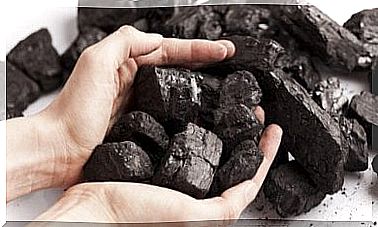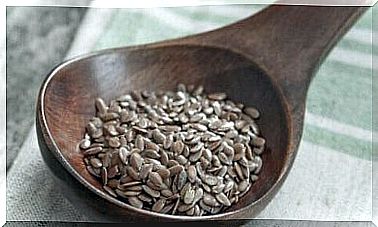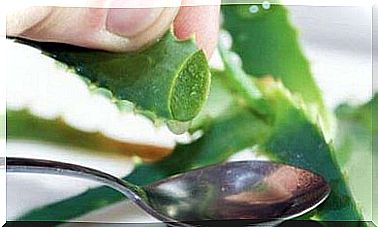Tubers, Tuberous Roots And Bulbs – Find Out How They Differ
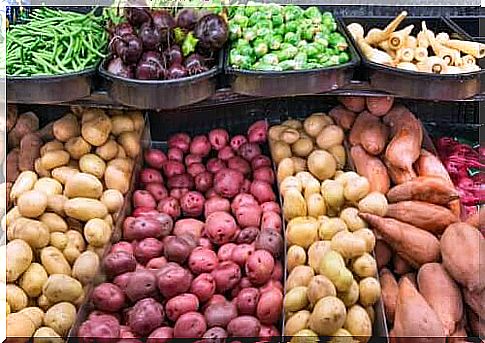
Although tubers , tuberous roots and bulbs grow underground and make tasty and nutritious vegetables, there are several differences in their structure and cultivation. They also belong to two categories of plants: bulbous and bulbous.
You have certainly eaten potatoes, onions, beets, carrots and sweet potatoes more than once. They all have one thing in common: their edible parts grow underground. However, do you know the variety of food plants that are grown this way and that provide nutrients to the pantry?
In this article, we’ll explain the difference between tubers , tuberous roots, and bulbs.
They differ from each other by an underground part that develops in order to accumulate nutrients. And so, in the case of tubers and bulbs, the stem is transformed into the edible part, and in the case of tuber roots it is the root.
In addition, tubers, tuberous roots and bulbs often have a different shape. The bulbs are rounded in shape, the tuberous roots are elongated, and the tubers are not very uniform. They have many similarities, so there are often mistakes in their classification.
What are tubers?
Tubers are lumps that form in the stems of certain plants to store nutrients, water and energy for the plant. An article from the Universidad Mayor of San Andrés, Bolivia, indicates that the origin and place where they began to be used for domestic use is in the Central Andes.
That is why tubers are so popular in countries such as Peru, Bolivia, Ecuador and Colombia. However, many of them have spread around the world, such as the potato.
Tubers are usually high in complex carbohydrates, water and fiber. They do not contain cholesterol and must be consumed after cooking for the human body to digest them.
They are also distinguished by the content of minerals such as potassium, iron, vitamin A and vitamin C. Tubers are versatile, which allows you to prepare dishes in a variety of ways. They are eaten boiled, in the form of puree, in soups, fried, baked, and in the form of flour.
Tubers in the garden and in the kitchen
Tubers are a very nutritious food that can be part of a balanced diet. In addition, they are usually inexpensive and easy to buy. There are many of them, but most of them remain little known, such as the Jerusalem artichoke (Oxalis tuberosa) or the olluco (Ullucus tuberosus):
- Potato: It is a vegetable popular all over the world and ranks fourth in terms of production after corn, rice and wheat. According to the International Potato Center, there are over 4,000 varieties of native potatoes with different shades, sizes and flavors. As a very versatile vegetable, it allows you to create many recipes. It can also be grown under various conditions.
- Turnip: it is a pink tuber, similar in shape and size to an apple. It is popular in Europe and its leaves are also edible. The tuber contains a lot of potassium, fiber and vitamin C.
- Radish: Radish is a vegetable of the cruciferous family. It is a plant native to China, but it adapts very well to different climates and is cold resistant. It matures quickly and is easy to grow, so it can be used in home gardens. It has various healing properties.
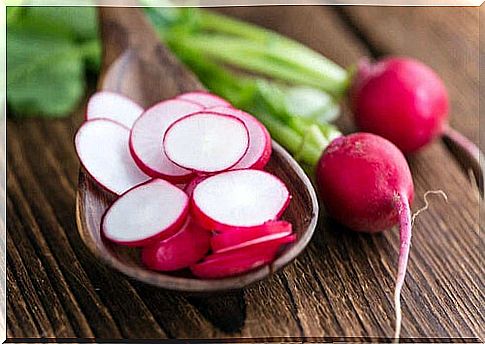
What is a tuberous root?
Tuberous roots are also referred to as root tubers. Their edible parts form as thickenings in the roots of plants, where nutrients accumulate. They usually come from tropical regions. However, due to their delicious taste and ease of cultivation, they have spread all over the world.
Examples of tuberous roots in the garden and kitchen
Tuberous roots are a type of vegetables grown underground most often used in kitchens. Other roots grow from the edible parts to help them obtain water and nutrients.
Their characteristic feature is that they can survive underground for a long time, even if the outer part of the plant is decaying. Let’s see some examples:
- Cassava: It is an important source of carbohydrate for many people, especially in Africa, America and Asia. It comes from tropical climates. Its shell is brown and the inside is white and contains a lot of starch. In the countries of South and Central America, cassava has found a wide and varied use in many popular recipes prepared from boiled, fried or dried tubers and ground into flour.
- Yam: After cassava, it is the most popular root in the world. It is usually eaten in the countries of Asia, Africa and South America. It is found in the tropics and has a brown skin. The white flesh is suitable for food and is rich in starch. The yam roots have the property that they can be stored for up to 6 months.
- Carrots: This famous vegetable is a tuberous root which is high in beta carotene. Carrots have a positive effect on eyesight and skin. Although we know orange carrots best, there are also purple, red and yellow varieties. They are easy to grow in a home garden, and the waiting time for harvesting is about 3 months.
- Sweet potato, sweet potato, or sweet potato: this species is native to South America. There are different varieties that can range in shades between white, orange, red, purple, and yellow. Its tubers have a slightly sweet taste, which is why the name sweet potato is used in many countries. It is high in vitamin C, starch, vitamin A and potassium, properties that nutritionists value it for. You can also eat its sprouts.
Sweet potatoes help you lose weight!
- Arakachnik, or edible potato: also known as Creole celery or white carrot, is a slightly sweet-tasting, white or yellow-colored root that contains starch. It is popular in South America, and due to its high energy content, it is a nutritious food. For the same reason, it is not recommended for obese or overweight people.
- Beetroot: This is a very nutritious and popular vegetable. Although it comes in a variety of colors, the most famous is fuchsia or deep red. Beet tubers have a slightly earthy and sweet flavor. Due to the high content of sucrose, white beetroot is used in the production of sugar.
What are bulbous plants?
A bulb is a thickening in the stem of a plant that grows underground and stores nutrients.
The bulbs are usually round or oval with a pointed end on one side. Most bulbs have multiple layers to protect them.
Examples in the garden and kitchen
Onions are characterized by the fact that they can be stored for a long time without losing their freshness. They also have many properties that have been researched and used by medicine, as is the case with garlic and onions:
- Onion: This is the most important onion plant in the cuisines of the world, and it allows you to add flavor to a variety of recipes. The onions can be eaten raw, boiled, fried or stewed. They are rich in vitamins, minerals and antioxidants. The best part is that they are easy to grow and can be kept in small gardens, even on the balcony.
- Garlic : Garlic is a food used as a spice. The head of garlic on the top layer consists of different cloves. The edible part of each clove is also located under the skin. It is characterized by a strong odor due to the sulfur content.
- Fennel: Fennel is a very useful plant because it has various healing properties that have already been used in traditional medicine. Interestingly, all parts of this vegetable can be eaten or used as a spice.
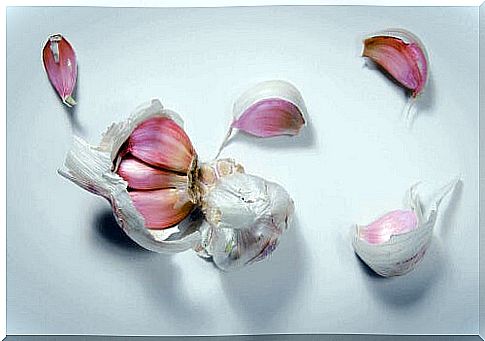
Addition! What is a rhizome?
Unlike tuber, bulbous root and bulb, the rhizome has a structure that grows horizontally shallow underground and in which nutrients also accumulate. On the other hand, tubers, tuberous roots and bulbs grow vertically.
The rhizomes, growing to the sides, develop several buds, from which they grow roots downwards, and green shoots upwards. Thus, these plants reproduce rapidly.
Some examples of rhizomes:
- Turmeric: comes from India and is one of the ingredients of a typical curry spice. It is characterized by a distinctive yellow color, thanks to which it is used as a food dye. The rhizome is ground and dried to a powder. In addition, turmeric has very strong and rich healing properties.
- Ginger: This rhizome is prized for its pleasant aroma and spicy flavor. Like turmeric, it has anti-inflammatory properties.
Tubers also have a decorative use!
Now you know the difference between a rhizome, tuber, tuberous root and onion. In addition to their use in the kitchen, it is worth knowing that there are also some varieties of these plants that are used for ornamental use. The most famous are tulips, dahlias, lilies, daffodils, lilies and gladioli.


